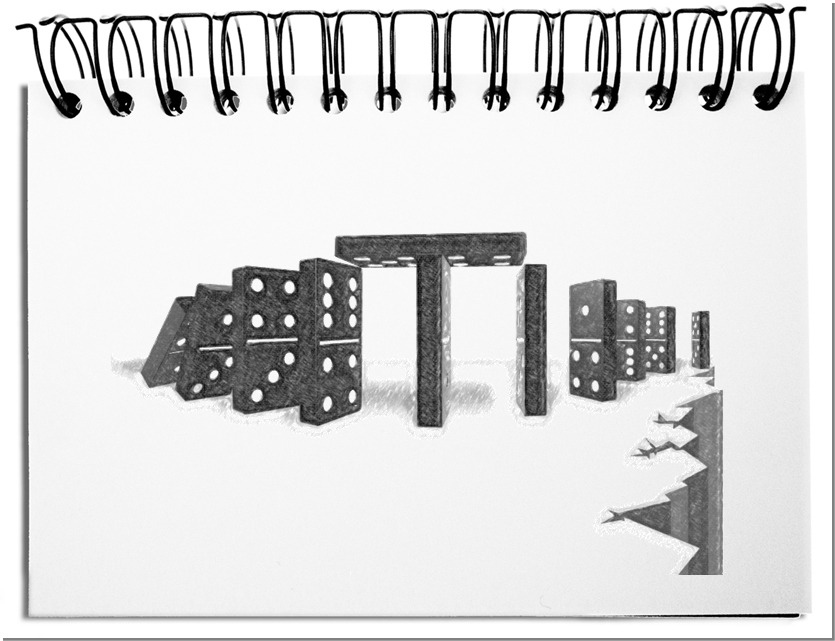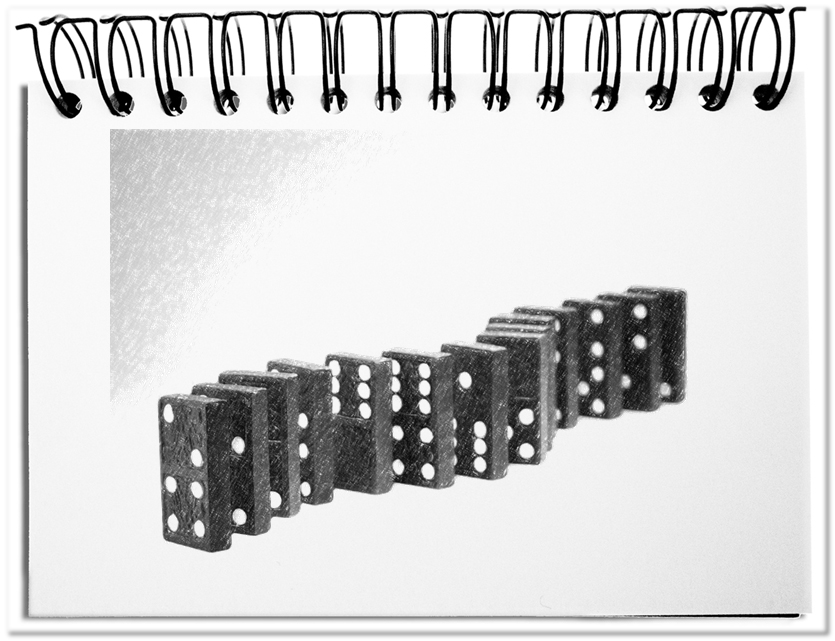Fruitful negotiations need an approach that is focused on the issue rather than on the relationships and the personalities involved. Dealing with expectations and the search for common ground are more than the superficial wrangling for individual advantages. It is easier to agree, if there is a Win-Win situation for everyone. In order to make a result possible, objective, jointly determined reference points are needed. The state of affairs derived from the existing standpoints is crucial. If you find a common view of the initial situation and the conditions associated, some contradictions do not arise. The dominoes allow to experience this. Look at the following image! What is it all about? What do you notice? Which thoughts jump to your mind?
When looking at one situation, all participants have their own ideas, as they approach the situation from different viewpoints, focuses and subtleties. For this reason, all should start by describing the situation that is the basis for the negotiations – the issues, relationships, sequences, dependencies, and preconditions. The following perspectives help additionally.
- The look at the beginning
Especially when a snapshot of the situation is taken, nothing moves, which makes it necessary to find the entry point that obviously triggers the situation. Depending on this, the explanations, justifications, and negotiation points differ. That is why we ask ourselves: where does it start? - The look to the end
On the downside, the situation is determined by its end point. The last stone completes the process. Some imagine that it tips over – or maybe not. The boundaries of a negotiation determine where the need is for discussion and where not. You agree upon the following questions: Is this the end? And what happens then? To what point does a negotiation make sense? - The look for saliences
Our attention is particularly attracted to individual stones because something is different – the toppling stones, the two T-forming ones, or the stone close to the edge. However, these peculiarities do not mean that they are important for the negotiation. Therefore, the saliences should be jointly questioned: What do they mean for the reconciliation? - The look beyond
So far, we have been looking at the obvious – the stones and the abyss. The abyss is only implied. We do not know how deep it is or what can be found below. The meaning of the scenery is also left to the imagination of the viewer. The mental cinema that begins should be articulated so that the participants can understand what the thoughts of the others are. The following questions bring these hidden agendas to light: What happens in the end? What is the point behind it? Why does this situation exist? Like this? - The holistic look
As soon as we have a clear view beyond that, we can combine all the previous findings into one explanation. This provides extended perspective – the holistic view. Only the connections between the views lead to a conclusive starting point. Now we get a common answer to the question: What is happening here?
These are by far not all perspectives, but essential ones. There are infinitely many more. In serious negotiations at eye level, the parties involved should share their point of view. This will result in an appropriate interpretation of what is happening, leading to a mutually satisfactory outcome.
Bottom line: In most cases, the participants discuss the “wrong” issues – personal attitudes of the counterparts, the various negotiation positions and the arguments that allow the winner to take all. It is more effective to jointly describe the starting point so that everyone talks about the same thing. That way many misunderstandings are avoided from the outset. These include: where it all starts and ends, what you notice about the matter, what is the point behind everything and how everything is related. By jointly developing the state of affairs, unproductive negotiations are avoided at an early stage. On this basis fruitful negotiations can start.


